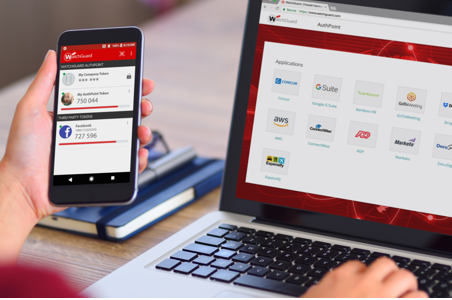To employ or not to employ? Factors to consider when looking for IT support
The first thing to disclose is that EasylifeIT only provides outsourced IT services but outsourcing is not always the right choice for all companies. In some cases employing IT people direct and having them on-site may be the better option. In this article, having been the customer and supplier at different times and having worked with internally employed and outsourced IT support, I am going to take an honest look at both sides, it’s up to the reader to decide the best choice for them.
In many companies, there is a regular debate about whether it is better to employ IT support staff on the payroll or engage an IT support company (frequently called Managed Service Providers or MSPs). I have to declare now that my preference is to have my cake and eat it. In other words to have the best of both the availability of internally employed staff and the wide-ranging expertise of an MSP, but many people end up with the worst of both worlds as I will explain. Later I will compare across:
- Responsiveness
- Location
- Expertise
- Security and
- Cost (we previously discussed whether it is cheaper to do it inhouse at the end of this article here)
Should I outsource or employ someone?
The two most important considerations for me are cost and expertise. Staff costs are essentially fixed (people expect to get paid the same every month) and yet the activity you need them to perform goes up and down, varying massively. The best way to keep costs down is to avoid any fixed costs and keep costs variable as far as possible. If the business is busy you can afford to increase the amount of variable resource you use, but if the business is quiet, or for example, we have another lockdown, then, as a business owner, you probably want to be able to reduce costs, without laying off staff. We previously wrote an article on how much IT support costs and you can find it here.
Sadly, when you employ someone in an IT support role their availability will rarely match demand. When the IT system is working smoothly for the average-sized company, internal staff often get asked to do other work. They then focus on the other work, sometimes cutting back on preventative work and when a crisis happens and team members have to switch and focus on the crisis. Then the people they were working for are left in the lurch.
No one can predict PC or server failures or IT outages – if they could then they would never happen because they would be prevented – so IT staff are often either underused in their IT role (and get asked to do something else) or are crazy busy on IT stuff, normally when the deadlines for other work is happening too.
Another consideration is expertise
Most companies are utterly reliant on their IT systems nowadays and cannot process sales or serve customers without them. Most companies have multiple systems, networks, servers and mission-critical IT and it is almost impossible to find one person who is an expert in all of them. This makes employing the right people expensive and if you are lucky enough to find them, then they are difficult to keep because they are rare and get poached.
When should I employ someone internally?
Some companies get to a size where they need an expert on-site for their most critical system. Imagine a semi-automated production line that creates thousands of products each day and is computer-controlled or a website and integrated order fulfilment system that handles hundreds or thousands of orders and dozens or hundreds of returns a day. These systems are mission-critical: if they go down the company essentially stops and they cannot be replicated manually.
Many such companies have an expert on-site who checks, updates and monitors the systems moment by moment and can fix the majority of issues that might arise. They are as extremely valuable but the likelihood of them having expertise in the full range of business IT and connectivity is low, plus we come back to the matching of demand above. We can both imagine the reaction of the MD or CEO if she hears that IT couldn’t fix the mission-critical system because he was fixing the email server!
What is the downside of remote IT support?
The biggest concern that most people have is that the MSP will not be available on demand. The thought of not being able to walk round to the IT support team fills some people with dread. They will frequently ask the person next to them or just moan about it rather than pick up the phone to external support. However, in reality, 2020 demonstrated that most IT departments are now only available on the end of a phone and not in the same building. For many firms with multiple locations, their internal IT was never in the same building anyway. Anyone engaging with an MSP needs to be find out how they manage calls and how they ensure that appropriately skilled people are always available to resolve problems.
What are the pros and cons of remote IT support?
I have tried to lay this out below by looking at the main factors that companies will consider:
[table id=2 /]
You know that old saying that the answer is usually neither one extreme or the other, it’s somewhere in the middle? The same is true of IT support. The right answer is probably to consider employing people to run mission-critical systems that require specialist knowledge and constant on-sight attention and look at outsourcing everything else, but the final answer is going to depend on your business.
There are a couple of other factors to consider with outsourcing and I have again taken these from situations I have seen in the past. A question that is often asked is…
Have you got UK coverage? What happens if I open an office in another location?
At the time of writing, most IT support is now by phone. People have adapted quickly to having to contact someone by phone or email for support, so this seems to be less of a problem in our post-lockdown world.
Do you have a limit on how far you will travel?
Most providers will ensure that when they are needed on-site, that they will come. In 99% of the cases that we see, no onsite presence is needed but some companies want it or insist on a certain number of on-site visits per year, so that’s important to check with the provider and ask for what makes you feel comfortable. It’s your company so get the support you want; you can always review it after a few months if you don’t really need on-site visits and this may reduce the cost further.
Do you supply hardware?
Hardware has become a commodity. Few providers are able to access significantly cheaper prices than their customers. Many providers will put a small mark-up on the hardware to cover costs and handling, so this is important to check with the provider.
I hope this has been useful and please leave your details in the form below so we can send you related information and help you in the future if you need it.



